Hazardous waste sites are not exactly an endangered species: In Buncombe County alone, there are about 30 of them, relics of former manufacturing operations or other businesses that left behind toxic residues. Some of those companies were established before the 1970s, when pioneering environmental laws began regulating industrial pollution. Others simply ignored the laws governing disposal of dangerous chemicals. Either way, these contaminants are hard to get rid of, and expensive cleanup efforts can drag on for decades with no sure resolution.
The Chemtronics site in Swannanoa, for example, has been on the U.S. Environmental Protection Agency’s National Priorities List since 1982, yet there’s still no end in sight to the cleanup (see “Chemtronics: From Chemical Weapons to Conservation Easement,” March 24, 2016, Xpress).
Meanwhile, over at the CTS site on Mills Gap Road in South Asheville, concerns about the pace and effectiveness of cleanup efforts have mobilized community activists (see “Toxic Legacy: CTS Site Breeds Heartache for Residents,” June 1, 2016, Xpress).
But a group of innovative strategies collectively known as “in situ remediation” could dramatically improve the prospects for restoring these and other high-profile Superfund sites more quickly and at lower cost.
Instead of trying to mechanically remove contaminants from a property, in situ remediation harnesses the ability of certain chemicals or bacteria to tackle them where they are and turn them into harmless substances. Later this year, environmental contractors will implement such strategies at both those sites, under the auspices of EPA Region 4 officials. And meanwhile, another local project that’s already underway — RiverLink’s phytoremediation effort at the former Edaco junkyard on Amboy Road — gives some hints of these approaches’ potential to reclaim festering hazardous waste sites.
A growing science
In situ remediation utilizes emerging technologies to insert various natural or mechanical elements into groundwater or contaminated soil. The specific strategy employed depends on both the particular pollutants involved and the physical characteristics of the site.
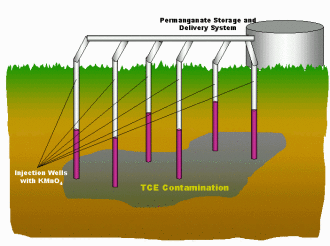
At Chemtronics, plans call for bioremediation: using bacteria that actually consume harmful contaminants. Nutrients and oxygen will also be injected to help the bacteria do their job. At the CTS site, meanwhile, a concoction of chemical oxidizers, which attack and break down the contaminants’ molecular structure, will be injected into the ground. And at RiverLink’s Karen Cragnolin Park, native grasses infused with bacteria that “eat” the pollutants were planted at 26 places on the property in 2013.
Two key factors have helped such strategies gain traction: the emergence of newer technologies over the last two decades, and increased understanding of the limits of traditional cleanup methods.
“The National Research Council estimated that more than 126,000 sites have residual contamination preventing them from reaching closure,” notes a 2016 report by Cascade Environmental, a consulting firm based in Washington state. “Of those, 12,000 sites have residual contamination that will require 50 to 100 years to achieve restoration. Many complex sites are characterized by persistent chlorinated solvent impacts that, for various reasons, have not responded to traditional or simplistic technologies.”
In the past, notes hydrologist Frank Anastasi, “If you found something in the soil or the groundwater, you had to dig it up or suck it up and get it out of there. Now, we wised up and found out you can’t always just do that, especially with groundwater.”
In addition, he continues, older strategies such as pump-and-treat do little to address contamination in the surrounding soils and bedrock structures. “Think about drinking a soda at McDonald’s,” says Anastasi, a consultant to the POWER Community Advisory Group for the CTS site. “You suck the soda out through a straw and you think you’ve got it all; but if you let the ice melt a little bit, you suck some more out and you still taste some Coke.”
Cheaper, more effective
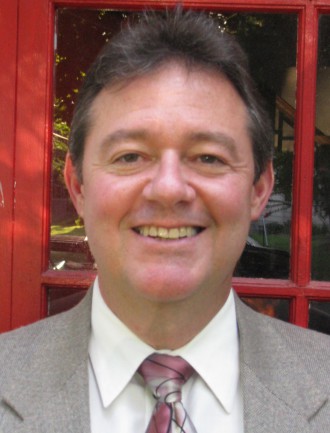
The long-running cleanup efforts at Chemtronics seem to bear out that assessment. A series of samples and tests conducted by Altamont Environmental over a three-year period found that the pump-and-treat system that’s been in operation since the early 1990s has been only 23 percent effective in removing contamination, according to EPA site supervisor Jon Bornholm.
He’s overseen cleanup efforts at the site since the late 1980s, and he says the upkeep required to keep the pump systems functioning has been a constant nuisance. “They were having a big issue with iron buildup, as well as bacteria buildup, in extraction wells,” Bornholm explains. “Plus, you have the expense of electricity for running the extraction wells, as well as the treatment systems, and also the cost of discharging treated groundwater to the sewer system and maintaining that discharge line. With in situ, we eliminate those costs.”
After several years of on-site pilot studies at Chemtronics, officials settled on in situ bioremediation as the most promising alternative strategy. Altamont, says Bornholm, “was able to show that it was removing at least 51 percent” of the contaminants.
The Asheville-based consulting firm is currently designing a matrix of injection wells across the property near known contaminated groundwater “plumes.” After that, contractors will inject a lactate solution (to give the bugs something to eat immediately), followed by emulsified vegetable oil (a long-term food source) and, to add more bacteria to the mix, “a bioaugmentation solution called KD-1.”
“It’s all about contact,” notes Bornholm. “We want to make sure the bacteria get in contact with the contamination.”
A two-pronged approach
Proposals for cleaning up the CTS site have been debated for years. On Nov. 22, the EPA announced that it had finally reached agreement with the site’s potentially responsible parties on an interim action plan to address contamination on 3.1 acres of the former manufacturing facility, covering the most polluted portions of the site. Large concentrations of fuel oil mixed with trichloroethylene, a known human carcinogen, have been found there.
Two strategies will be implemented this year in different areas. On a 1.2-acre area directly beneath where the factory once stood, electrical resistance heating will be used to “basically boil the groundwater,” so the TCE is released as a vapor, Anastasi explains.
Another 1.9 acres to the north of that will be treated by “injecting a chemical that will cause a change in the electron states of different compounds,” he continues. “You end up chemically breaking down the TCE molecules into harmless substances.” The heat strategy is used with TCE concentrations that are closer to the surface; the chemical treatment can get at toxics lower down.
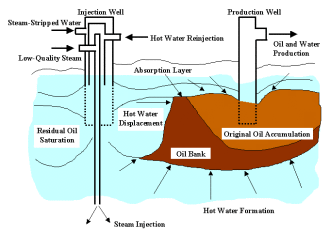
As with bioremediation, the solution injected into the ground must be brought into contact with the plumes of contaminated groundwater to be effective — and in many cases, that’s easier said than done.
“Though the chemistry involved is relatively simple, the technology is not a simple one to implement,” notes a report from the Strategic Environmental Research and Development Program, an arm of the Defense Department. “The subsurface environment can be difficult to control, and it can be challenging to achieve adequate distribution of the oxidants. In many cases, in situ chemical oxidation requires site-specific data that may not be available from typical site characterization investigations.”
Air apparent
Electrical resistance heating, meanwhile, poses its own challenges. Vapor emissions must be monitored to ensure that they don’t pose a risk to nearby residents.
As workers begin implementing these strategies at CTS, Anastasi explains, “They’ll be monitoring for vapor in the air around the site and also the groundwater, to see if any of these [pollutants] are starting to get closer to people.”
Vapor emissions came under scrutiny last year when ambient outdoor air testing conducted on properties adjacent to the Superfund site in the summer and fall of 2016 yielded higher TCE readings “than the concentrations historically detected in these areas,” according to a report by Amec Foster Wheeler, a contractor hired by CTS to conduct the tests.
Neighboring homeowners refused to allow the EPA to conduct indoor testing, however, and later outdoor air samples showed lower TCE vapor levels.
Potential pitfalls
Despite in situ remediation’s considerable promise, these methods, too, have their limits.
“No. 1, you have to have contamination that is amenable to it,” says Anastasi. “No. 2, you have to find the remediation strategy that works best for that kind of contamination.”
There can also be problematic side effects. “Some compounds … may be broken down into more toxic byproducts during the bioremediation process (e.g., TCE to vinyl chloride),” notes a Federal Remediation Technologies Roundtable overview.
“When you change the chemistry in the ground, you change a lot of things,” says Anastasi, who has 30 years’ experience in the field. Minerals occurring naturally in the soil can react with the injected elements. In addition, pH levels must be carefully monitored to maintain an optimal environment for the chemicals or bacteria being used.
At Chemtronics, says Bornholm, the bacterial action can acidify the soil, leaching potentially hazardous elements such as magnesium from the rock. To combat this possibility, a neutralizing sodium bicarbonate solution will be inserted to create a buffer that allows the bacteria to multiply.
Promising signs
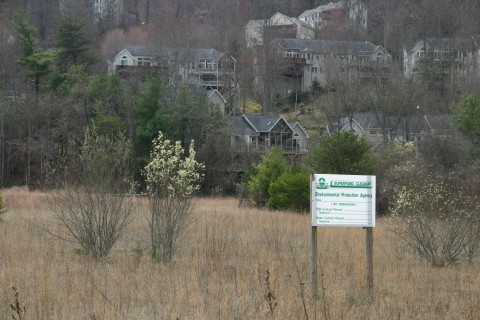
“We’re very hopeful that both the electrical resistance heating and the in situ chemical oxidation at CTS will have some really good results and get rid of a whole lot of the contamination that’s still down in the soil and bedrock pretty quickly,” says Anastasi. The EPA estimates that these new technologies could reduce TCE concentrations in the targeted areas by 95 percent over the next few years.
And at Chemtronics, Bornholm reports, the plan is to begin injecting bacteria “maybe once a year for a few years and then monitor the groundwater to make sure the levels [of the degraded contaminants] aren’t going up and that we’re not finding byproducts in the groundwater.”
It will take years to determine how successful these efforts are. But Vicki Collins, a retired chemistry professor from Warren Wilson College who’s studied the Chemtronics site since the 1980s, says her research into in situ bioremediation has been promising to date. The strategy, she notes, “has been used at several other former weapons facilities to address contamination.” There is some concern about degraded byproducts of pollutants, but long-term studies at other sites have shown that this is a safe solution to groundwater contamination.
And in the meantime, RiverLink’s phytoremediation project gives further reason for hope. In December, the nonprofit proudly reported that samples taken at 26 contamination areas in the park were all found to be below the EPA’s safety threshold.
“The property now faces another round of testing, after which a landscape plan will be developed, moving the site closer to becoming a link in the greenway paralleling Amboy Road and the French Broad River,” said RiverLink, calling the project “one more chapter in our history of successful park and greenway creation.”



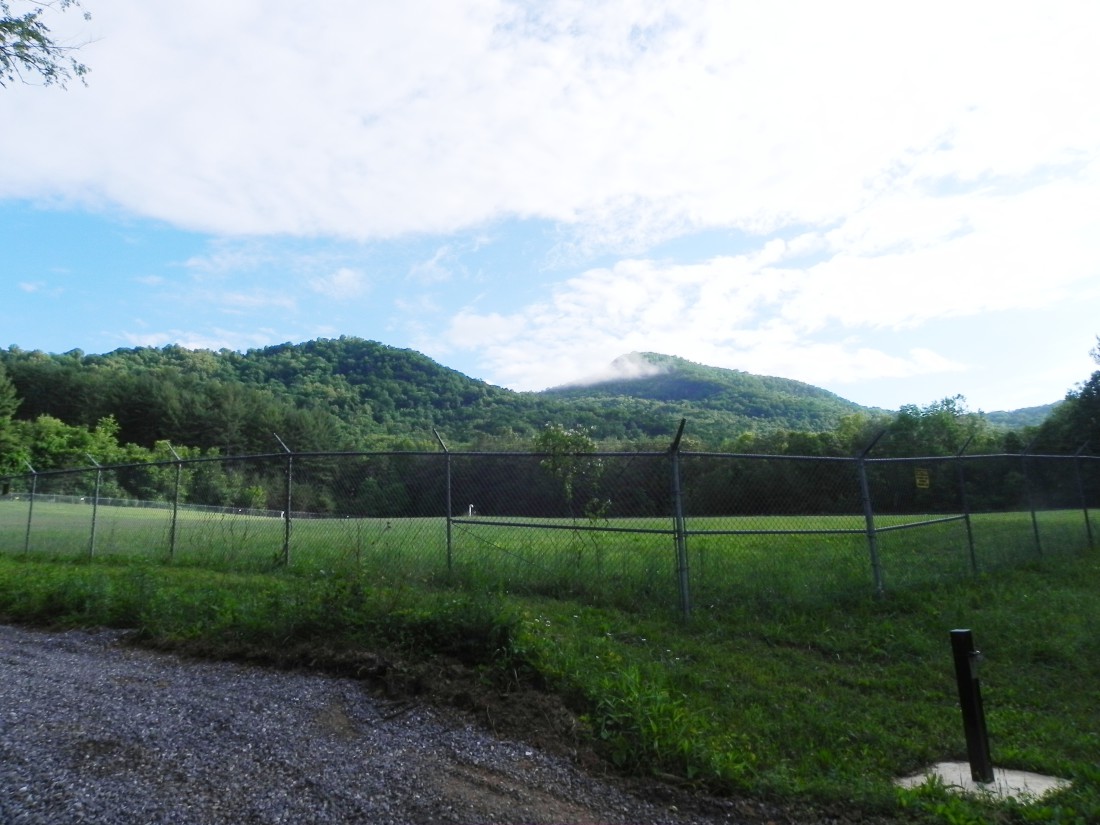


Before you comment
The comments section is here to provide a platform for civil dialogue on the issues we face together as a local community. Xpress is committed to offering this platform for all voices, but when the tone of the discussion gets nasty or strays off topic, we believe many people choose not to participate. Xpress editors are determined to moderate comments to ensure a constructive interchange is maintained. All comments judged not to be in keeping with the spirit of civil discourse will be removed and repeat violators will be banned. See here for our terms of service. Thank you for being part of this effort to promote respectful discussion.